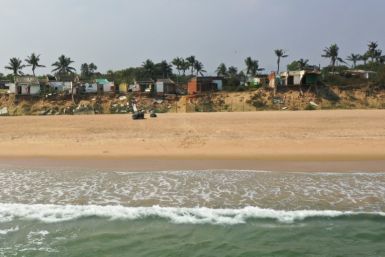South Australia earthquake: 3.7 magnitude seismic event felt in Adelaide, surrounding areas

South Australia experienced an earthquake measuring 3.7 on Thursday morning. Automated data gathered from Geoscience Australia reveals the quake struck at a depth of eight kilometres near Murray Bridge around 12:07 a.m.
According to Geoscience Australia seismologist Hugh Glanville, the tremors were felt 46 kilometres away from the epicentre. Residents in Murray Bridge, Adelaide and neighbouring Gawler reported felt the quake.
Speaking with ABC 891 (via The Advertiser), Glanville described the quake as “quite shallow,” adding that it was “not of a damaging size but of a decent size.” He said, “It would have woken everybody up. With this size earthquake you wouldn’t generally expect damage to buildings, that doesn’t generally happen until 4.5 or bigger.”
Angela Moro in Banksia Park said she “felt like a roller coaster went through the house.” Yvonne Marshall said she “thought it was an explosion.”
“Had it here in Nairne frightened the you know what out of me,” Maureen Watkins said. Emily Pollock said she felt the earthquake in Andrews Farm.
“Shook me from left to right about five times,” she said. “Woke my 2 yr old up as well!” Rhonda Charman added, “My daughter was texting me when the earthquake hit Salisbury East at 12:15 a.m. She thought someone was on the roof.”
As reported by AAP (via Yahoo 7), Glanville said Thursday’s earthquake was recorded as the second biggest to have rocked the area in the last decade. Nevertheless, it is unlikely it inflicted any significant damage. The previous strongest, which struck in 2010, measured 3.8.
An earthquake like this could be followed with aftershocks within a few days or weeks, Glanville said. He further highlighted it is occasionally a precursor to a more impactful event. “It's quite rare and unusual but it does happen in Australia and around the world from time to time, so we never rule that out," he told AAP.
According to Geoscience Australia, the past decade has seen as many as 28 seismic events. These were caused largely by weakness in the continental crust. Australia was annually moving north by about seven centimetres. In January, as many as nine earthquakes struck South Australia. One of these measured 3.2 near Moonta while two events of magnitude 2 struck near Orroroo and Booleroo Centre. Some of the other areas to have been affected were Hawker, Clare and Quorn.
Adelaide experienced its strongest earthquake, measuring 5.5, in 1954. While significant damage was caused in the seismic event, there was no loss of life.






